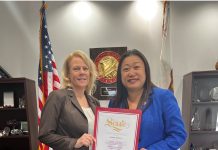Even as urban planners presented their progress in scrutinizing downtown planning guidelines and reviewing land use issues in Laguna Canyon, the City Council Tuesday also heeded suggestions from an increasingly well organized group of canyon residents, who want a seat at the planning table.
The City Council contracted with San Diego-based urban design firm MIG last July to integrate findings from past and ongoing studies, gather input from residents and businesses and help city planners devise a strategy to preserve and enhance Laguna’s distinctive character. Their task included making a proposal for updating the city’s existing Downtown Specific Plan, which guides development standards between Cliff Drive and Legion Street. But when project proposals in Laguna Canyon revealed that the city’s existing land use policies contradicted an adopted local specific plan, the Council broadened the scope of MIG’s task. It now includes what is described as the Laguna Canyon Planning Study and the firm has since been gathering input and reviewing past and ongoing plans to address both the downtown and the canyon.
Even so, Mayor Pro Tem Steve Dicterow, noting insufficient direction, urged the Council on Tuesday to expand MIG ‘s tasks to be more inclusive of affected canyon communities and to better identify key issues. Among other things, they should hold not one but six meetings for residents and businesses. They should also be instructed to define and illustrate the terms “rural,” “small scale,” and “neighborhood compatibility.” These terms were at the center of the controversy over the now approved artists work/live project in Laguna Canyon.
Penny Milne, president of Canyon Alliance Neighborhoods Defense Organization, wholeheartedly agreed that MIG’s assignment fell short of a meaningful analysis for the canyon. As she struggled to finish her well-articulated presentation in the allotted three minutes, the Council agreed to extend her time in order to hear her out in full.
“Planning for the canyon is not a trivial issue,” said Milne, and it affects more than the residents who live there. “It’s the gateway into town. It’s an economic engine. It’s environmentally important. It’s aesthetically important and it’s important to everybody. So I think it benefits all of us to treat planning for it seriously and separately,” she insisted, a sentiment shared by 30 or more supporters, nine of whom took the podium to say so.
“This canyon is so precious,” said Council member Toni Iseman, explaining her agreement with the unanimous decision to expand MIG’s canyon analysis. “If we mess it up, we are going to lose our identity. We are going to turn into a suburb if we don’t have a vibrant and healthy canyon.”
As for the downtown area, MIG’s marching orders had been more detailed and few disputed their progress so far, though some questioned certain parameters.
MIG’s Chris Beynon and Rick Barrett highlighted their findings so far and their future plans. They are in the midst of wrapping up outreach and interviews with residents, businesses and various organizations and working towards a draft framework, said Barrett. Later this spring they will return to the Council with updates and hold public hearings in early summer, on schedule for a final report by fall.
Beynon described community outreach so far, particularly the pop-up workshop last November when lower Ocean Avenue was closed to traffic and set up with demonstration street and sidewalk treatments.
In sifting through comments from the pop-up workshop and interviews with various interest groups, they have been able to identify some common themes, as well as areas of divided opinion.
Everyone more or less agreed with the need to maintain and safeguard Laguna’s historic charm and identity as an artists’ community, he said. Residents also showed a strong penchant for an increase in outdoor dining locations.
In other areas, the public was divided. Some prefer uniformly historic architecture, while others would like modern structures peppered among the period buildings, for example. And where many residents called for less parking downtown and more at the periphery, some still want more parking at the town’s core. Opinions also differed on allowable building heights. Beynon said MIG would analyze these positions and come back with suggested options.
In the meantime, the workshop has shown the value of pilot demonstrations and MIG proposed more.
Resident and cycling advocate Billy Fried expressed his support for reimagining streets in ways to open them up to pedestrians, cyclists and community gatherings. He described New York City’s success in creating such spaces in a way that benefitted all users without disrupting traffic flow.
Questioning the appropriateness of MIG’s use of photos from Copenhagen and San Francisco, on the other hand, Ruben Flores countered that Laguna might be better off emulating successful models from smaller towns, seeking a rural rather than urban look.
“I think the approach that Chris has outlined for pilot demonstrations is exactly the way to go,” said Mayor Bob Whalen. Experimentation downtown would be much better than trying to update the downtown specific plan on paper without real examples, he said.
The Council agreed that staff will work with the consultants and affected businesses and residents to come up with proposals for some more pilot demonstrations before the end of April. “Personally I’d be fine with trying any of them,” said Whalen. “Let’s just do it quickly.”




